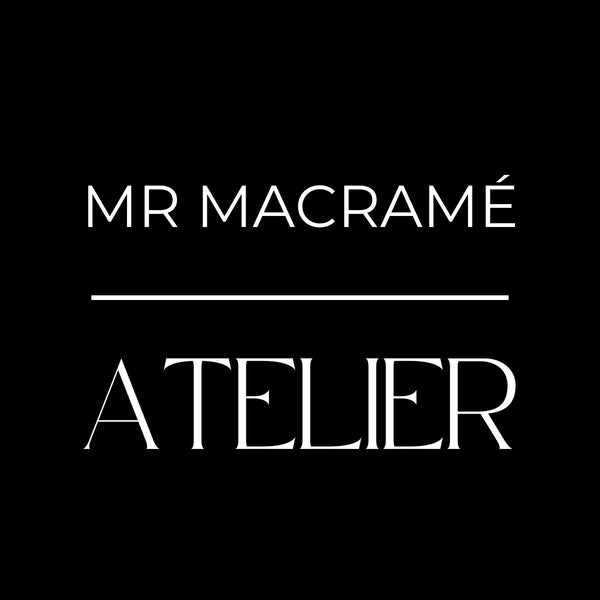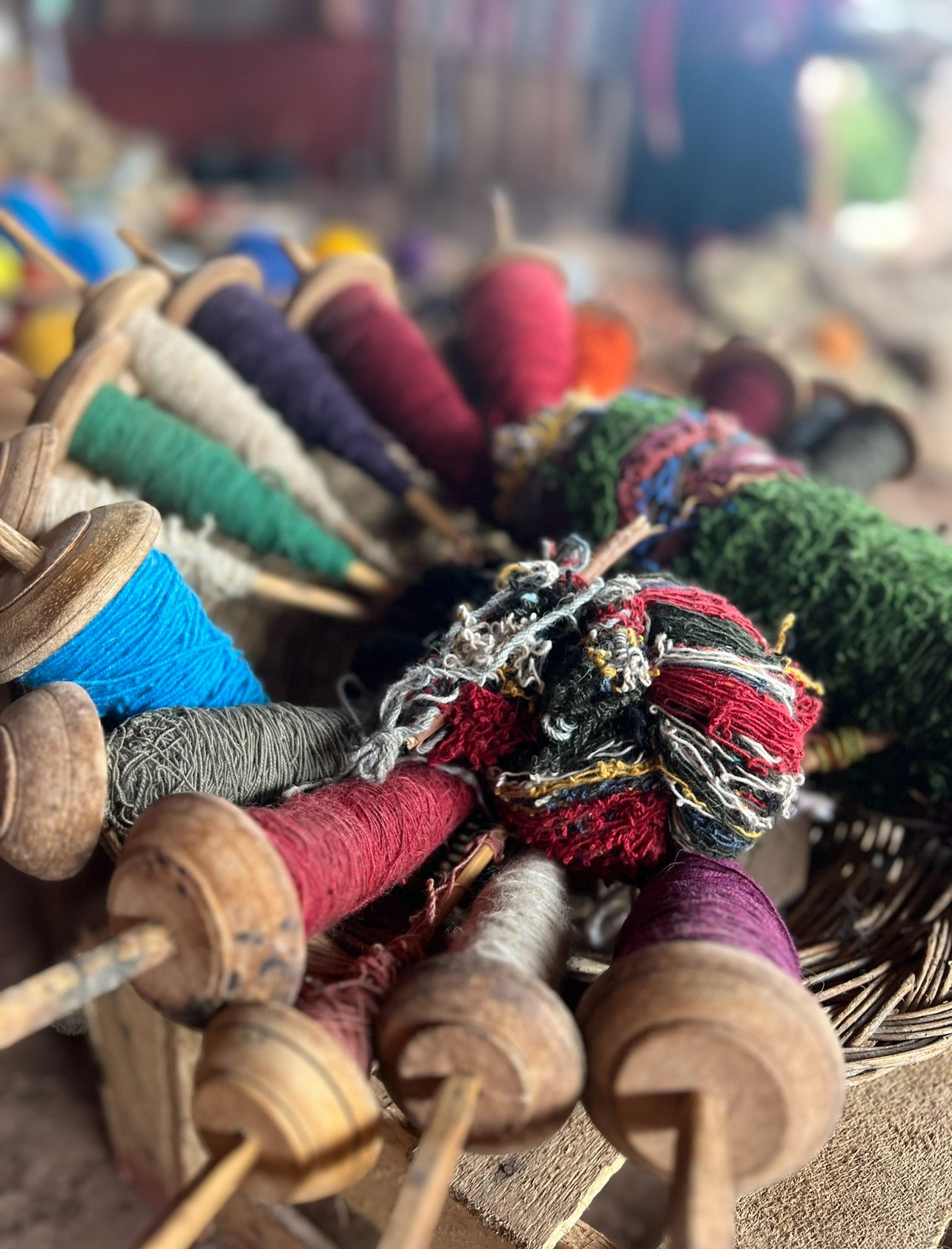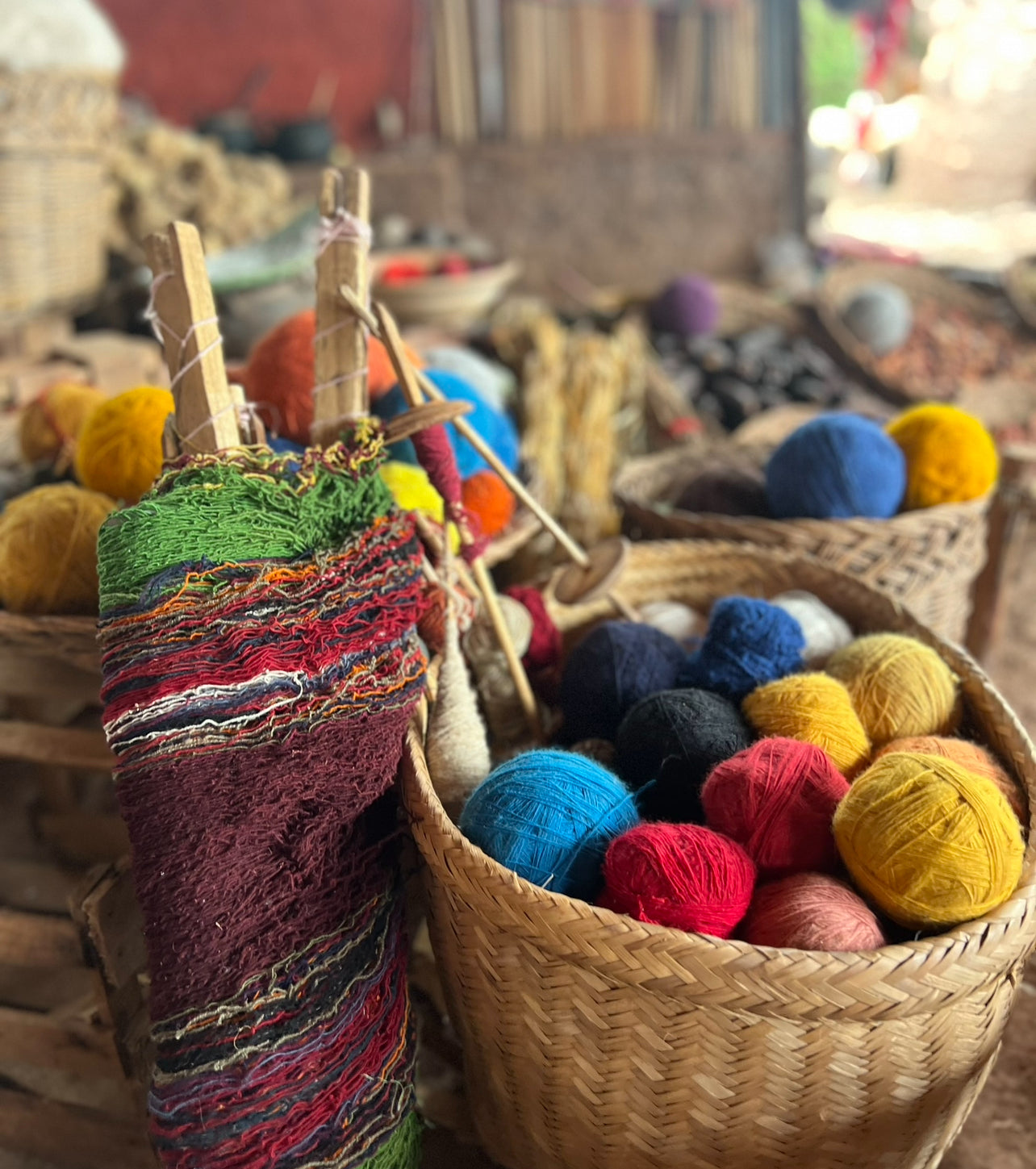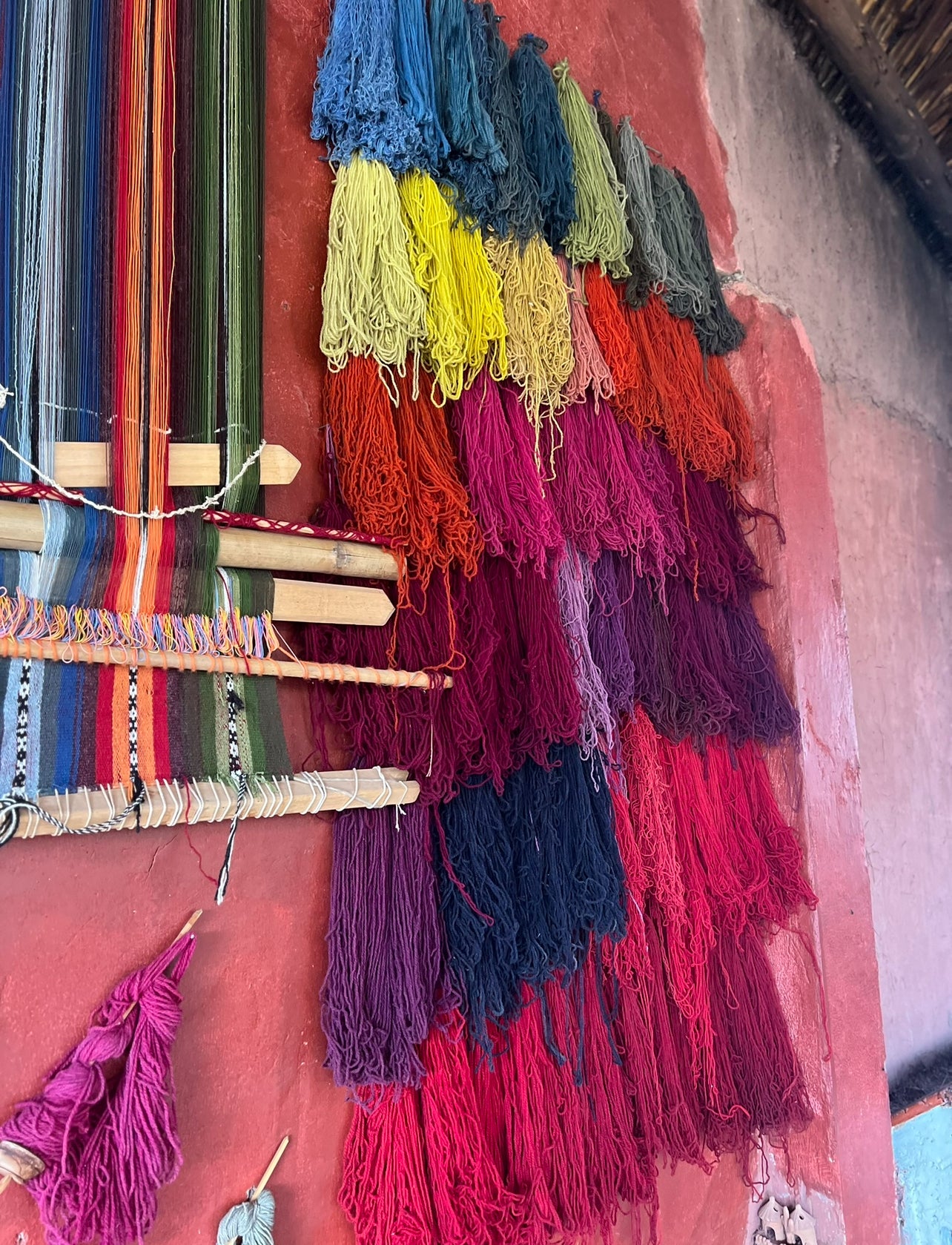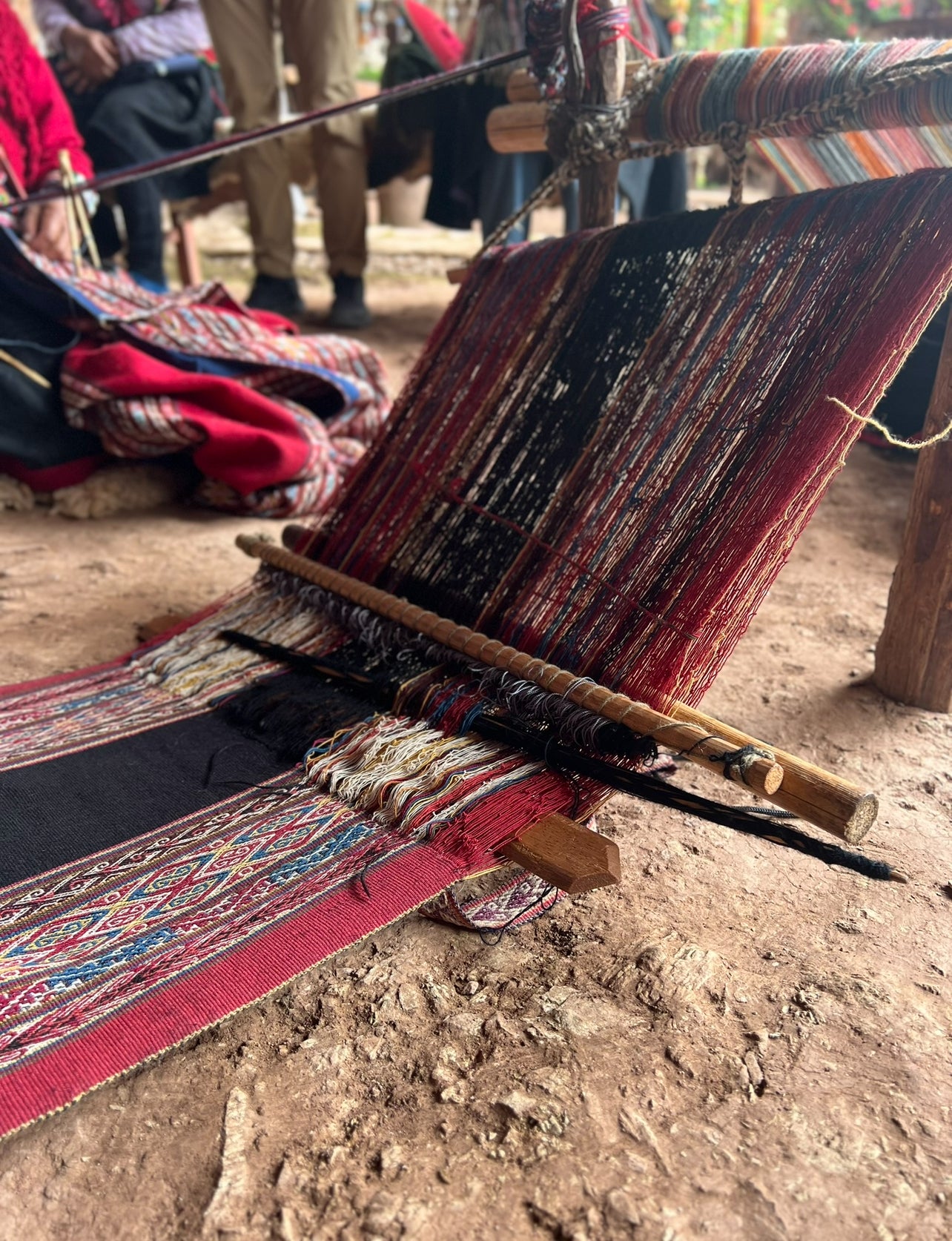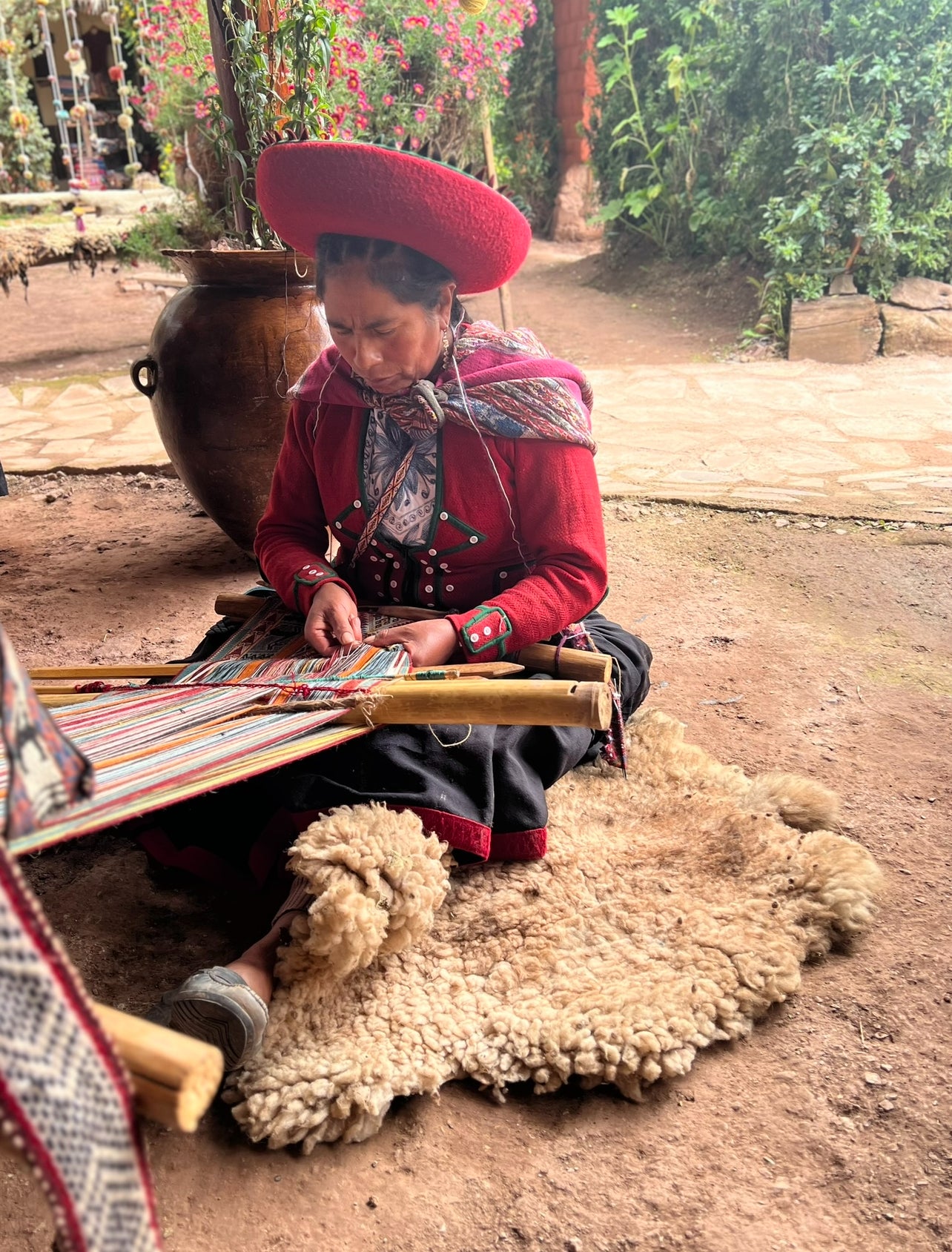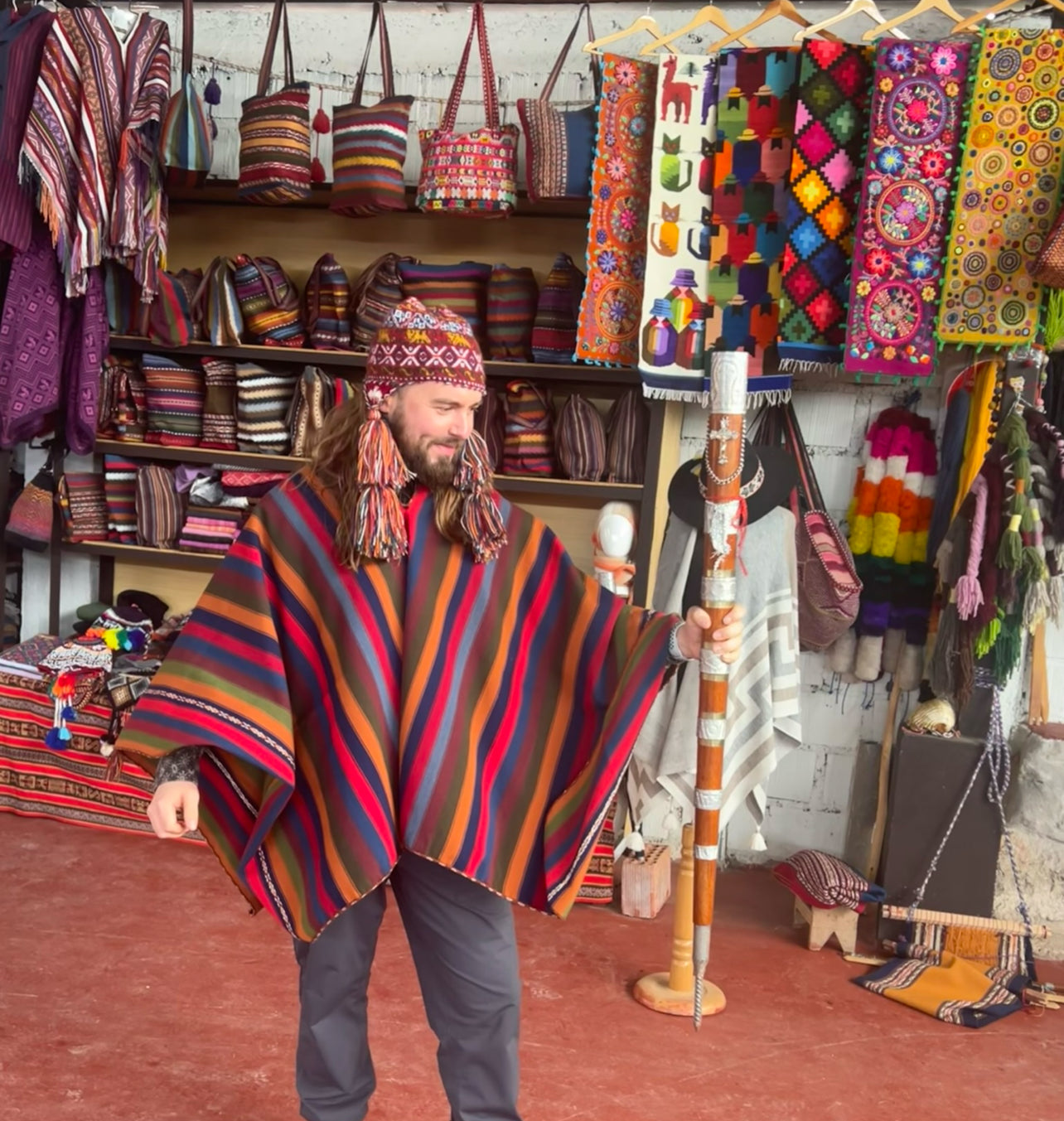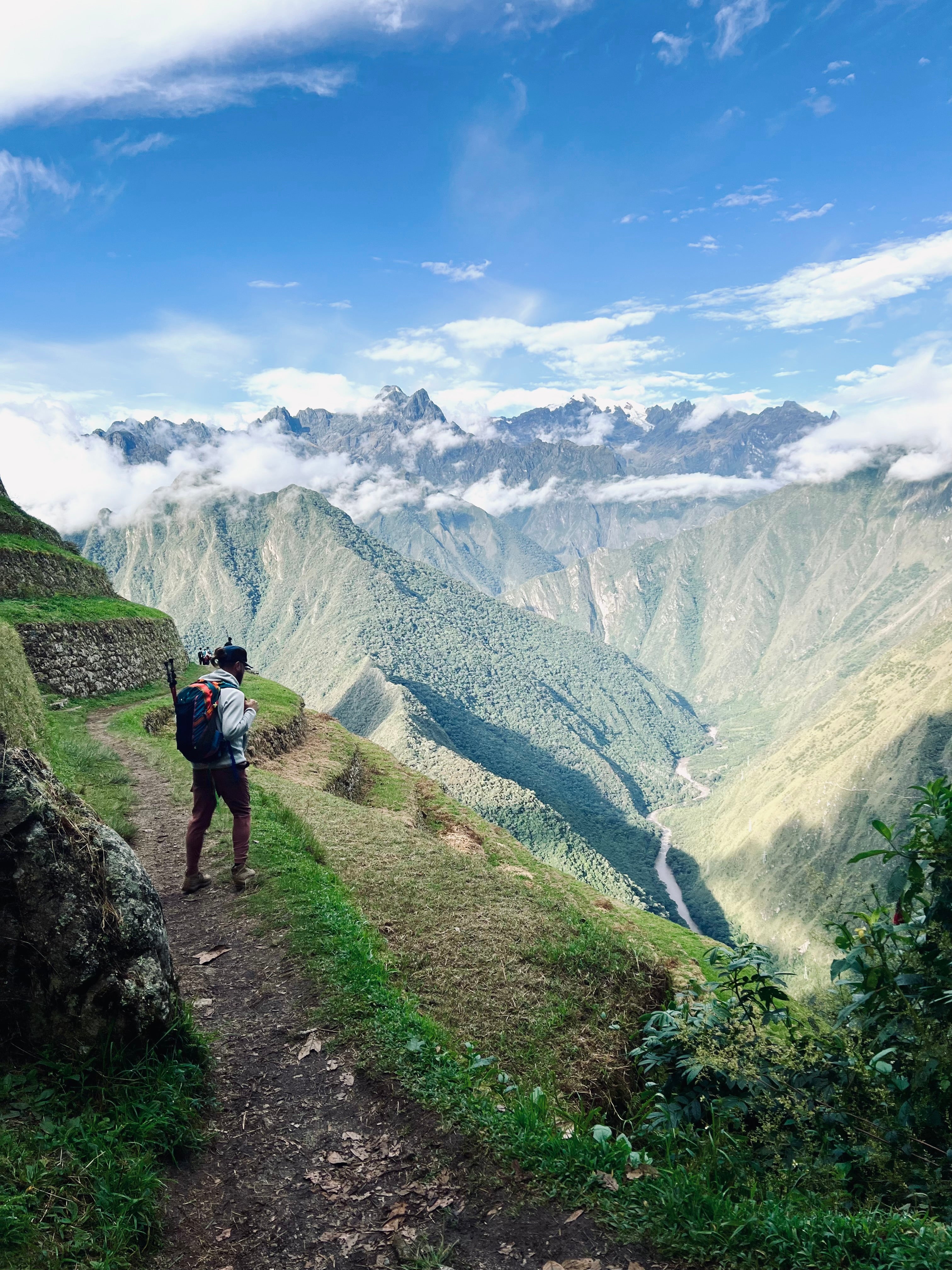
Weaving Stories across Peru, Chinchero
A trek through the mountains to discover the Andean Textiles

After completing an unforgettable hike to Machu Picchu
I traveled to the highland village of Chinchero, just outside of Cuzco. Known as the 'birthplace of the rainbow', the town is home to a community of Quechua women who keep the region's high textiles alive.



Here I had the chance to learn how the stories are told, not through words, but through weaving. The women welcomed me into their cooperative where they demonstrated every part of their process. From spinning and naturally dyeing the materials to the final woven designs. They primarily work with alpaca and llama wool which is cleaned using a natural soap, then hand spun using drop needles.

The natural dyeing process uses plants, minerals and insects. Cochineal beetles, found on cacti, create vivid reds and pinks, while yellow comes from nolle leaves. purples and blues come from native sweetcorn's (which they're also renowned for) or flowers.
Each pattern they weave is their form of storytelling. The motifs reflect daily life, beliefs, family history and connection to the land. I learned how certain designs represent mountains, rivers or animals and how weaving is used to preserve cultural identity across generations.
Watching the women work was fascinating. Their skill and speed were incredibly inspiring, but so their deep knowledge for color, material and meaning within the work. The ancient Andean techniques continue to thrive, not just as a source of income but as a living evolving tradition.
The whole trip was a reminder that textiles can be powerful tools in both storytelling and cultural preservation.
Read more Textiles Travel Blogs
-
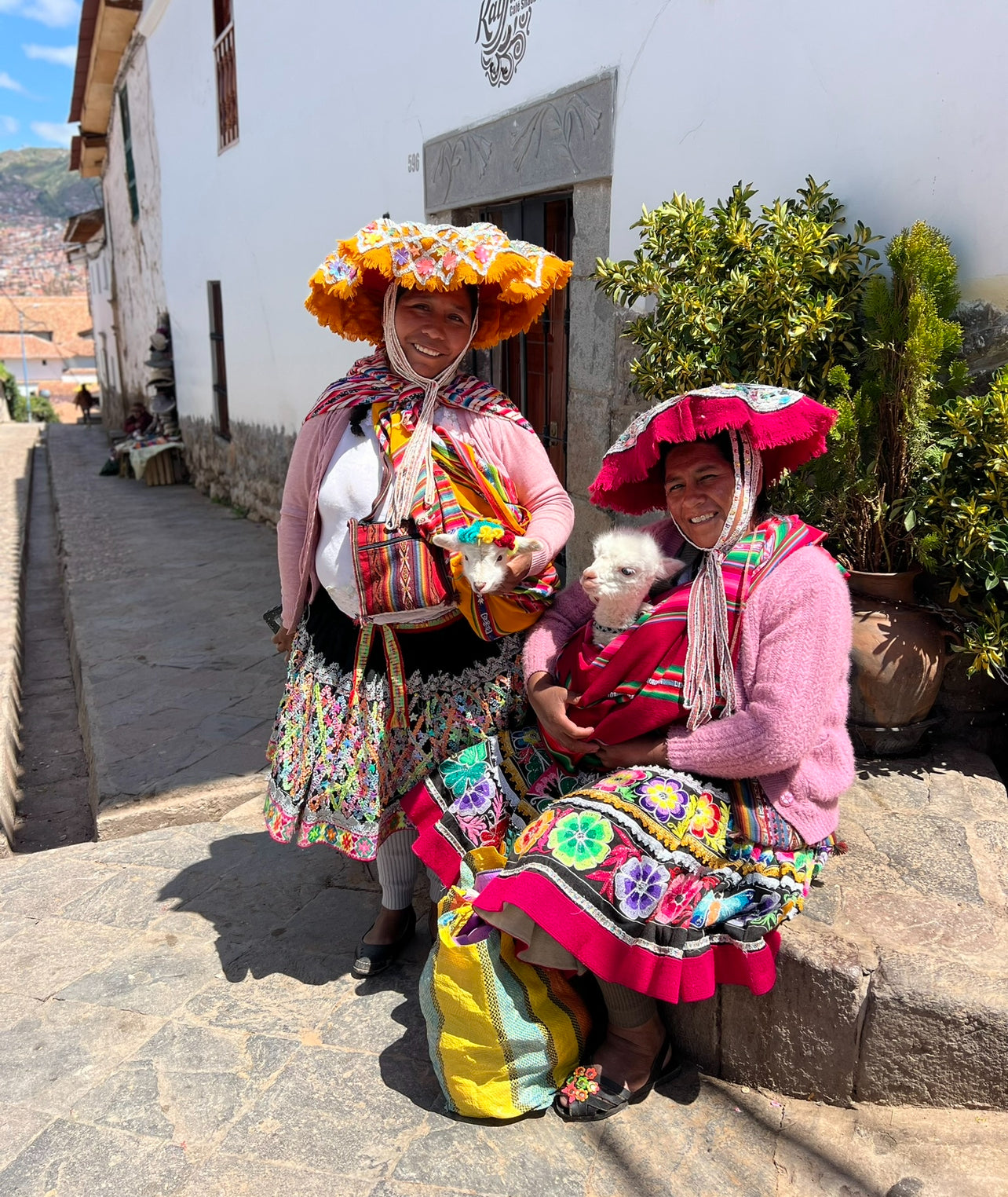
Peruvian Craft
-
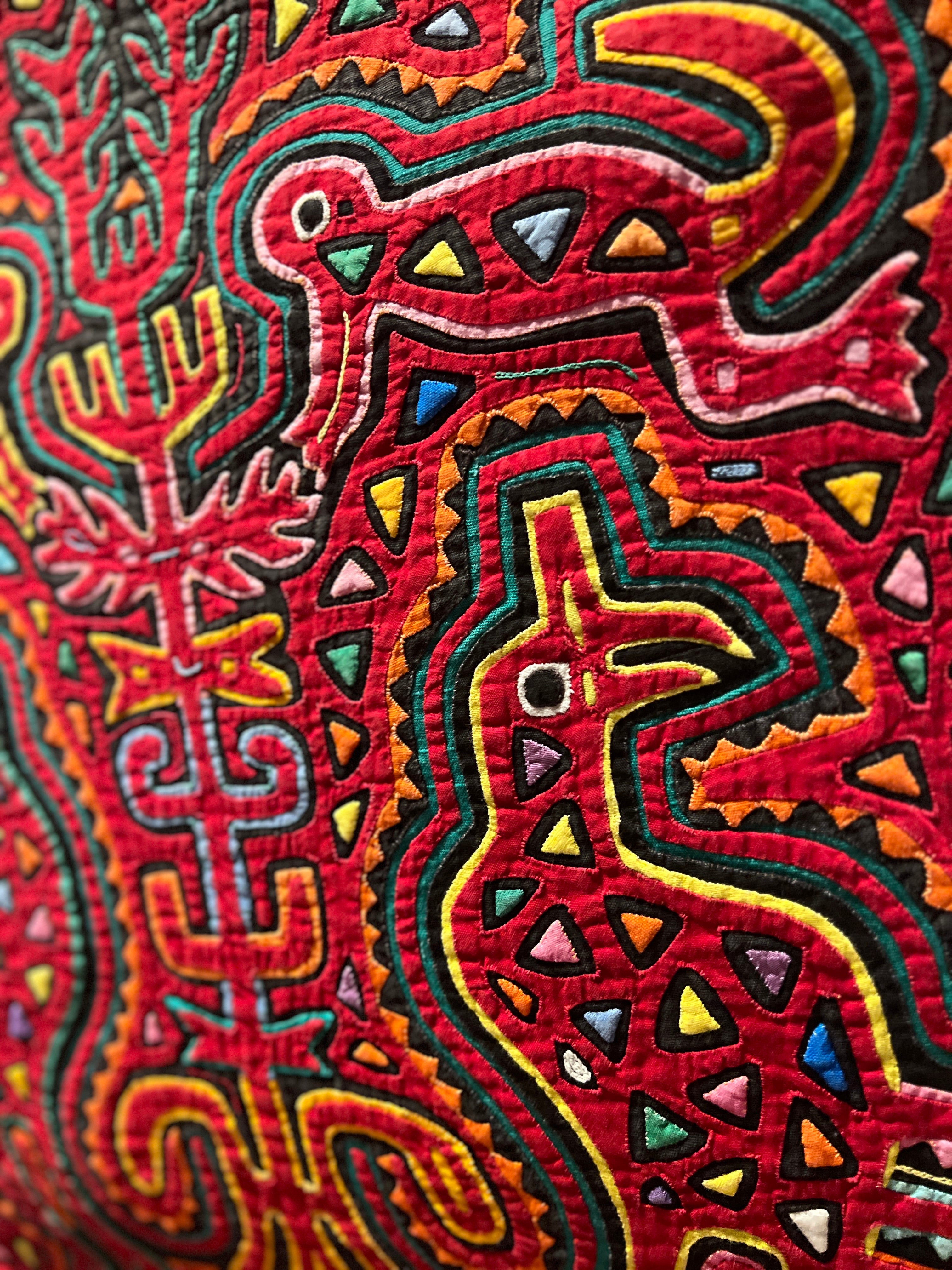
Panama Appliqué
-
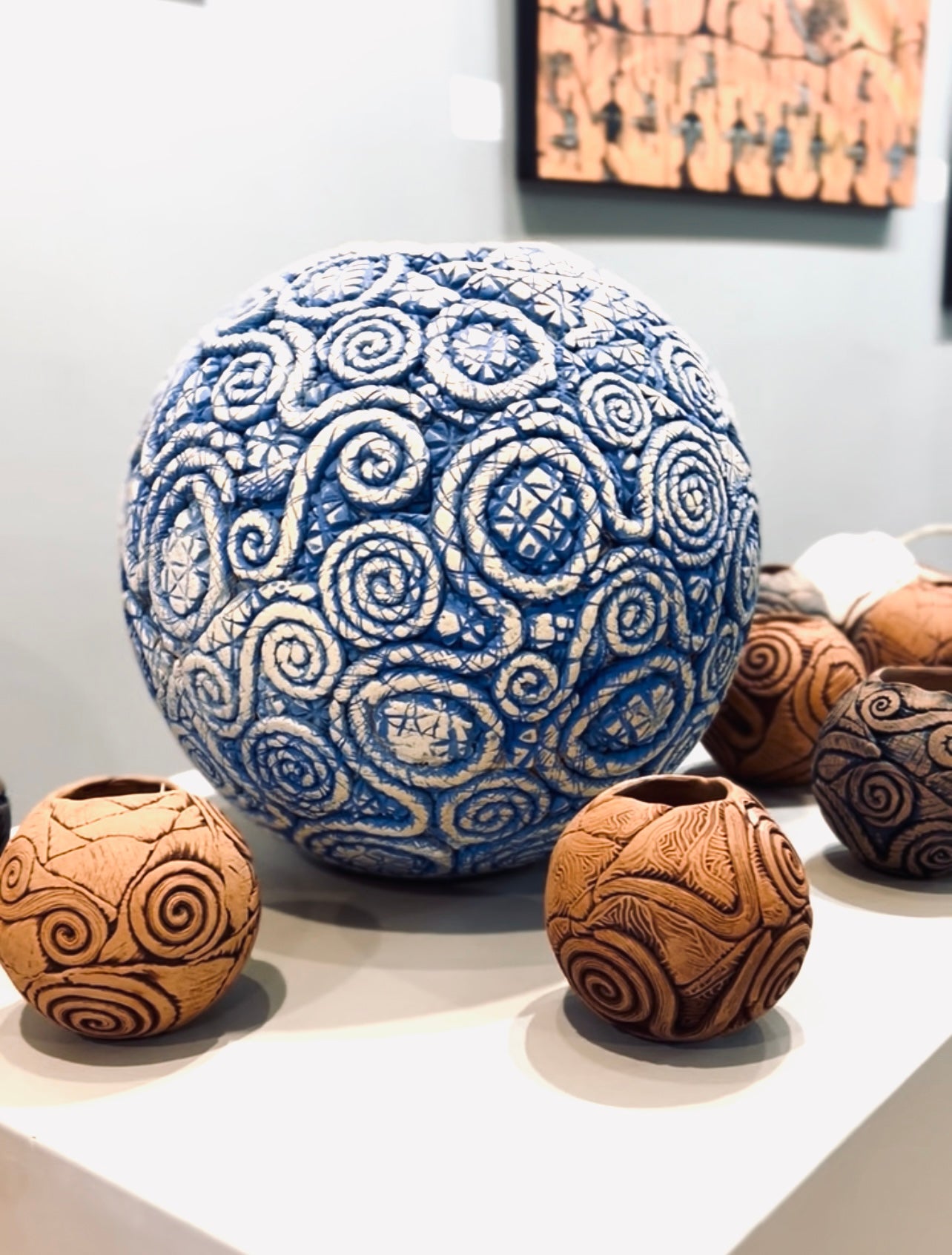
Australian Indigenous Craft
